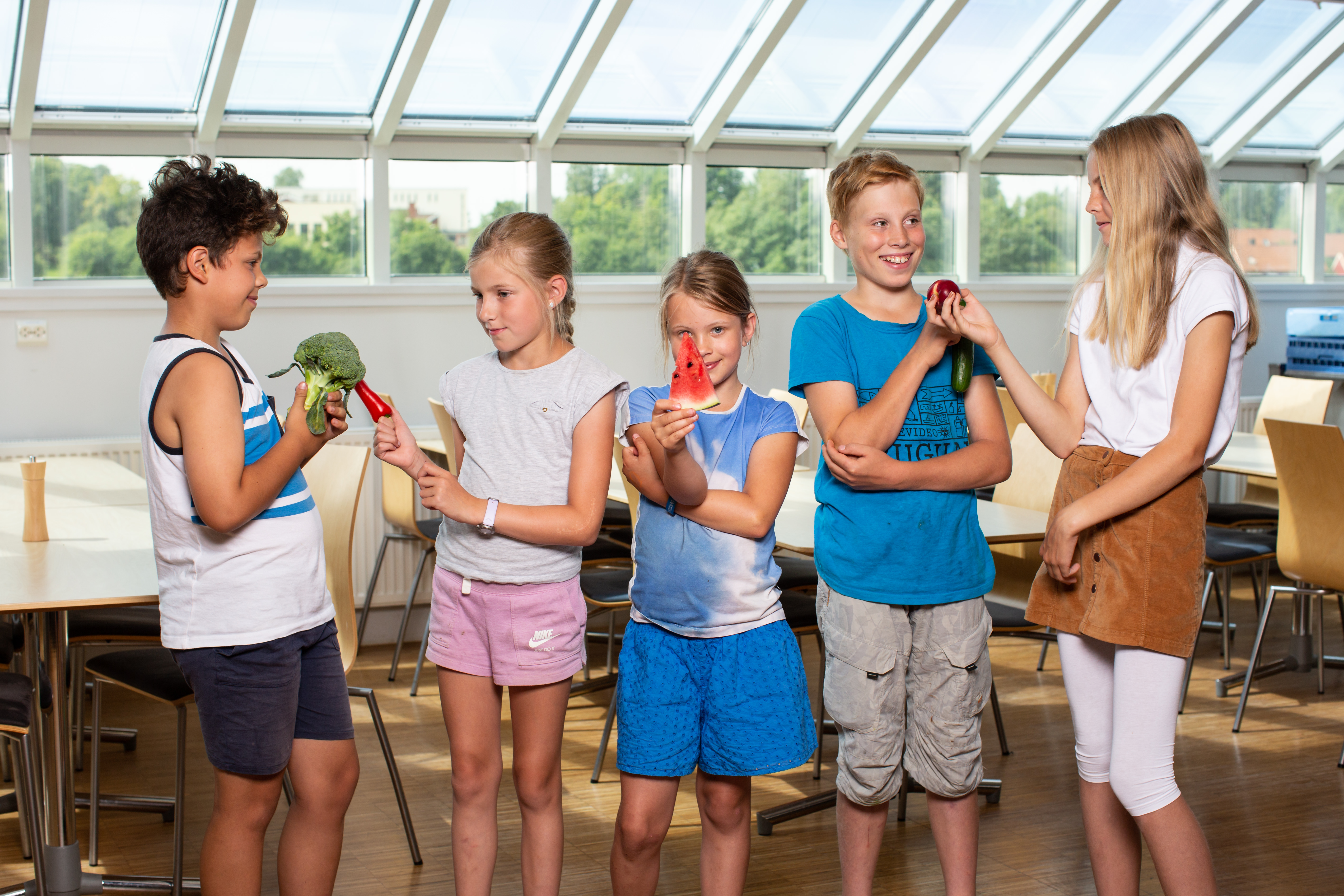How fruit consumption at schools can be increased through nudging

As children grow older, they are becoming more independent, with more freedom, money and food choices. Nowadays, it can be difficult for pre-adolescents to make healthy food choices, because of the tempting environment with high availability of unhealthy foods.
As an early stage researcher in Edulia, my goal is to get more insight into the impact of the eating environment at schools. I will explore how the school environment and pre-adolescent’s autonomy and motivation affect their food choices. In addition, I will develop and test a nudging intervention to promote healthy food choices in pre-adolescents.
Promoting healthy eating at schools
As children spend considerable time at school, the school environment is a good place to promote healthy eating habits. There are different ways for schools to create a healthy food environment, for example providing free fruits and vegetables and restricting unhealthy foods in school canteens. In upcoming blogposts, I will dig deeper into different strategies for promoting healthy eating at schools.

Nudging
One way to promote healthy food choices at school is through nudging. Nudging includes changing the environment in such a way that it is more likely that people will select a certain option. For example, a nudge could include placing healthy foods at a closer distance than unhealthy foods, so that it is easier to reach healthy foods. Consequently, by changing the environment without restricting foods, nudging may help to choose healthier foods.
Increasing children’s fruit consumption through nudging
In a recent study, researchers tested if a nudging intervention at primary schools in the UK could increase children’s fruit and vegetable consumption with their lunchtime meal. At schools in the UK, children eat lunch together and a hot lunchtime meal is usually prepared. The nudging intervention consisted of several changes to the cafetarias of primary schools:
- Posters with fruit and vegetables and cartoon characters of children enjoying these foods were used.
- Attractive names were created for available fruit and vegetables.
- Food labels were placed on the serving bowls of fruit and vegetables. The food labels included the attractive name, a picture and a cartoon character.
- Attractive servings with sliced fruit and colourful bowls were used.
- Fruit and vegetables were served first.
The nudging intervention was used in two primary schools during three weeks. Two other control schools did not make any changes to the cafetarias. Children’s consumption of foods was recorded before the intervention and three weeks later. Results of the study showed that children in the intervention schools ate more fruits, vitamin C and fibre. For example, approximately 46% of the children ate more fruits after the intervention. There were no changes in children’s vegetable consumption. Children in the control schools did not show changes in their consumption.

Conclusion
Nudging interventions can be a promising strategy for schools to encourage children to consume healthy foods. Results of the discussed study show that nudges can increase fruit consumption of children in primary schools. As not all children ate more fruits, it is important to explore why and for whom nudges work.
Literature
Marcano-Olivier, M., Pearson, R., Ruparell, A., Horne, P. J., Viktor, S., & Erjavec, M. (2019). A low-cost Behavioural Nudge and choice architecture intervention targeting school lunches increases children’s consumption of fruit: a cluster randomised trial. International Journal of Behavioral Nutrition and Physical Activity, 16(1), 20.
ESR4, fruit consumption, school


